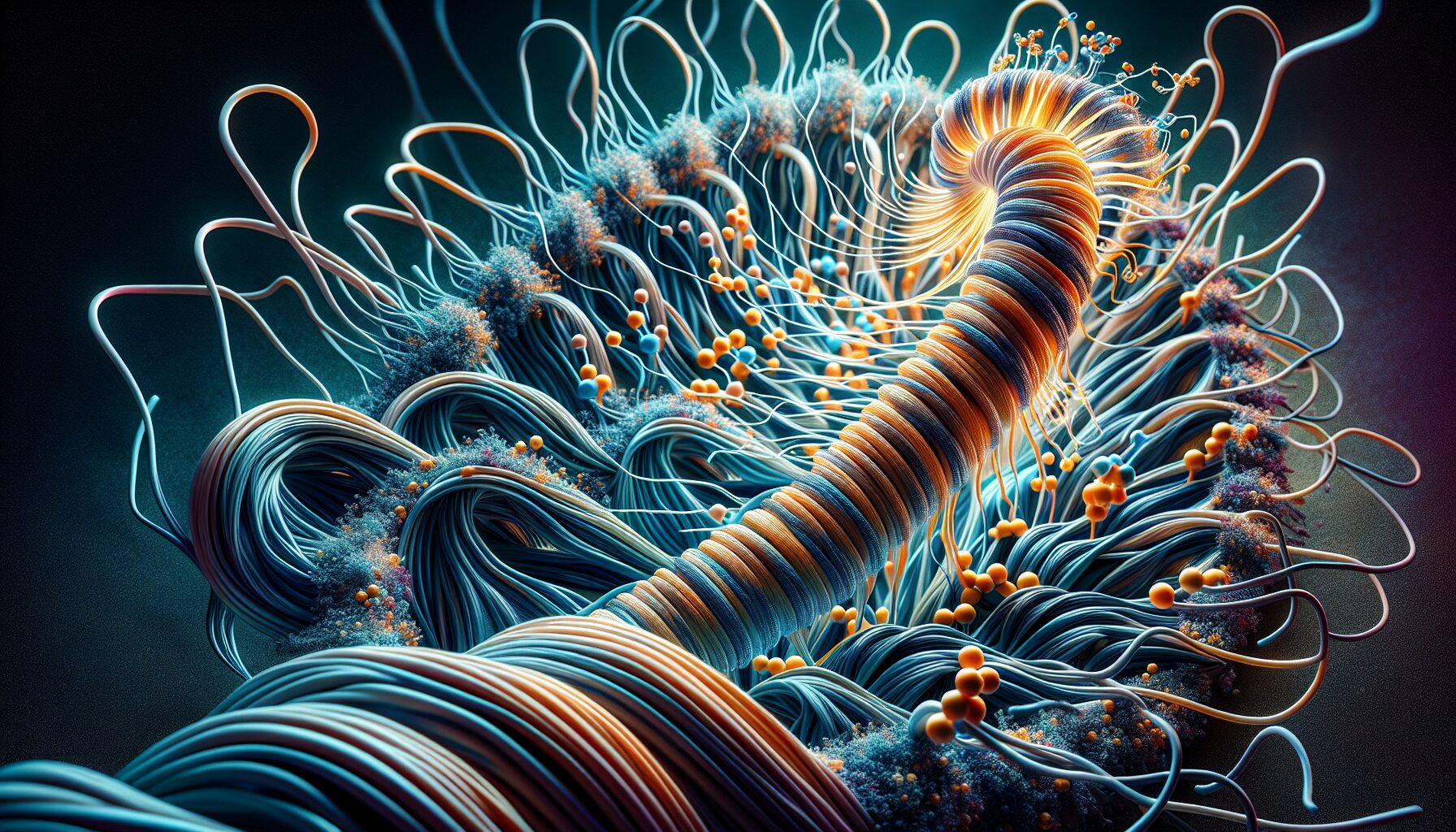In the world of biology, one particular protein plays a crucial role in the functioning of smooth muscles within our bodies. Enter smooth muscle actin, a protein essential for the contraction and relaxation of smooth muscles throughout various organs, including the intestines, blood vessels, and uterus. This remarkable protein helps facilitate the smooth muscle’s ability to carry out its fundamental functions, allowing us to perform everyday tasks like digestion and respiration effortlessly. So, let’s unravel the fascinating world of smooth muscle actin and explore its significance in maintaining the harmony of our bodily functions.
Smooth Muscle Actin
Smooth muscle actin refers to a group of proteins that are a part of the cytoskeleton in smooth muscle cells. These proteins play a crucial role in the contraction and relaxation of smooth muscles throughout the body. In this article, we will explore the definition, function, types, structure, role in smooth muscle contraction, regulation of smooth muscle actin expression, diseases associated with smooth muscle actin, diagnostic and therapeutic implications, and the latest research and advancements in this field.

Definition
Smooth muscle actin, commonly referred to as SMA, is a protein that is primarily found within smooth muscle cells. Smooth muscle is one of the three types of muscle in our bodies, along with skeletal and cardiac muscle. Unlike skeletal muscle, which is responsible for voluntary movements, and cardiac muscle, which is found exclusively in the heart, smooth muscle is involuntary and is found in various organs and structures, including the blood vessels, gastrointestinal tract, and uterus.
Function
Smooth muscle actin plays a crucial role in the contraction and relaxation of smooth muscles. When muscles are at rest, smooth muscle actin is in a relaxed state, and the smooth muscle cells are elongated. However, when a signal is received, such as a neural or hormonal stimulus, smooth muscle actin undergoes a series of changes that lead to muscle contraction. This contraction can help propel substances through various organ systems, such as food through the digestive tract or blood through the blood vessels.
Types
There are two main types of smooth muscle actin: alpha-smooth muscle actin (α-SMA) and gamma-smooth muscle actin (γ-SMA). Alpha-smooth muscle actin is found primarily in vascular smooth muscle cells and is vital for maintaining the structural integrity of blood vessels. On the other hand, gamma-smooth muscle actin is predominantly found in non-vascular smooth muscle cells, such as those in the gastrointestinal tract and uterus.
Structure
Smooth muscle actin proteins are composed of a chain of amino acids that fold into a helical structure. This helical structure gives smooth muscle actin its unique shape and allows it to interact with other proteins within the smooth muscle cells. These interactions are essential for muscle contraction, as they allow for the coordinated movement of actin filaments, which shorten and cause the muscle to contract.

Role in Smooth Muscle Contraction
Smooth muscle actin is a key player in the complex process of smooth muscle contraction. When a signal is received, such as a neural or hormonal stimulus, smooth muscle actin interacts with other proteins, including myosin, to initiate muscle contraction. These interactions cause the actin filaments to slide past the myosin filaments, resulting in the shortening of the smooth muscle cell. The coordinated contraction of smooth muscle cells allows for the movement of substances through the various organ systems of the body.
Regulation of Smooth Muscle Actin Expression
The expression of smooth muscle actin is tightly regulated to ensure proper function and coordination of smooth muscle cells. Various factors, including growth factors, hormones, and mechanical stress, can influence the expression of smooth muscle actin genes. For example, during smooth muscle development, specific growth factors, such as transforming growth factor-beta (TGF-β), play a critical role in promoting the expression of smooth muscle actin genes. Additionally, hormonal signals, such as estrogen, can also affect the expression of smooth muscle actin in certain tissues, such as the uterus.

Diseases Associated with Smooth Muscle Actin
Alterations in the expression or function of smooth muscle actin have been linked to several diseases and conditions. For example, abnormalities in smooth muscle actin expression have been observed in diseases such as asthma, where the smooth muscle surrounding the airways becomes hyperresponsive and contracts excessively. Similarly, fibrotic diseases, such as systemic sclerosis, involve the abnormal accumulation of smooth muscle actin in various tissues, leading to tissue stiffness and dysfunction.
Diagnostic and Therapeutic Implications
The study of smooth muscle actin and its role in various diseases has important diagnostic and therapeutic implications. The expression of smooth muscle actin can be used as a diagnostic marker in certain diseases, such as tumors. Immunohistochemical staining for smooth muscle actin can help distinguish between different types of tumors and aid in determining the appropriate treatment approach. Additionally, the regulation of smooth muscle actin expression and function provides a potential target for therapeutic interventions. Drugs that modulate the expression or activity of smooth muscle actin could be developed to treat diseases characterized by abnormal smooth muscle function.

Research and Advancements
Researchers continue to investigate the intricate mechanisms behind smooth muscle actin and its role in various diseases. Recent advancements in molecular techniques and imaging technologies have allowed for further exploration of the structure and function of smooth muscle actin at the cellular and molecular levels. Additionally, ongoing studies focus on identifying specific signaling pathways and molecules that regulate smooth muscle actin expression, with the aim of developing targeted therapies for diseases involving smooth muscle dysfunction. The field of smooth muscle actin research holds great promise for improving our understanding of various diseases and developing innovative treatment strategies.
Conclusion
In conclusion, smooth muscle actin is a group of proteins that play a crucial role in the contraction and relaxation of smooth muscles in our bodies. These proteins are involved in the coordinated movement of actin filaments, leading to the shortening and contraction of smooth muscle cells. Smooth muscle actin expression is tightly regulated during development and can be influenced by various factors throughout life. Abnormalities in smooth muscle actin expression or function are associated with several diseases, highlighting its diagnostic and therapeutic implications. Ongoing research is unraveling the complex mechanisms of smooth muscle actin and paving the way for advancements in disease diagnosis and treatment.

